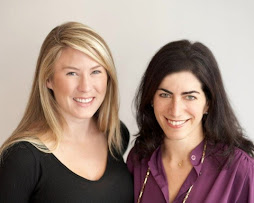
In our month-long introduction to Bottlerocket, we last left off as Tom decided to figure out a model that would fundamentally change the wine shopping experience, instead of just creating an alternative that he liked better.
We asked Tom about how he approached this challenge and what solutions he came up with. Here is some of what he shared:
“Businesses talk about being ‘customer focused’. But what does that really mean? Bottlerocket's model grew from a serious look at the pain that consumers feel when they buy wine. As a product category, wine is challenging. There are many regions, grapes, styles and vintages for the consumer to consider. And it is not cheap! Each purchase represents a financial risk. With all of these unknowns, how can a smart, thoughtful buyer make the optimal choice?
Bottlerocket's answer was to dig deep into decision science. How do we make decisions? And what do we need to optimize our personal choices with such a multitude of choice?
The first challenge for buyers is the sheer number of bottles. It can be completely overwhelming. And while there is definitely such a thing as too little choice, it turns out that in the "paradox of choice," there is also such a thing as too much. Bottlerocket's model constrains itself to 365 wines, one for each day of the year. Enough choice to cover the world of wine and a range of price points, but deliberately curated to keep the experience from being overwhelming. (read more about the importance of curating)
The second big issue in decision making is access to good information. Common among traditional wine shops is a wall of wine with nothing but a price tag as a data point. Bottlerocket goes deep and presents a wide range of information, ranging from detailed tasting notes, food pairing recommendations, critics’ ratings and the story behind the wine. This commonly formatted résumé is placed next to each wine where it sits on the shelf. Curious consumers can learn as much as is practical about each wine, short of actually tasting it.
The third big resource required to make a sound decision is context. The traditional organizational principle in retail wine businesses is region: France, Italy, Spain, etc. This is as logical as a Dewey-Decimal System for wine, but it does not necessarily speak intuitively to wine buyers. Consumers do, however, know why they need wine. They know what they are cooking for dinner that night, or to whom they intend to give a gift bottle.
Bottlerocket, in addition to the traditional method, presents its wines on islands that are organized by context, such as: Meat (Beef, Pork, Lamb, or Game); Take-Out (Japanese, Chinese, Indian, Pizza, etc.); Gifts (Someone You Barely Know, An Old Friend, Third Date, or The Boss.) Organizing wine around what a person already knows focuses that person on a small number of good and appropriate choices rather than an entire wall of wine.
Finally, the environment is important. Stress contributes to the challenge of making great decisions. Feeling judged, or unwelcome or just plain uncomfortable are huge hurdles to success. Bottlerocket is cheerfully lit, has a children's play area so parents can relax and enjoy themselves, is dog-friendly so people walking their pooches will know they are welcome, has fun and eclectic music to add whimsy, and is designed from green, unpretentious materials that all combine to say ‘come in and relax’.
Navigating a manageable number of wines, accompanied by excellent information, organized by need and by region, all in a comfortable, fun environment is Bottlerocket's recipe for the 'best wine buying experience on the planet'."
What’s more, Bottlerocket aims to please even after you’ve left the store!
Tom highlighted one more reason for the pain wine buyers feel. In addition to being a complicated product, consumers are also challenged by a lack of confidence. He believes that “this is only an issue of education and experience”.
The solution? Take-home information and 'bottlenotes'.
Tom says that, “While formal classes are valuable, and Bottlerocket offers a wide range, real wine education happens every time a person opens a bottle and takes a sip. So Bottlerocket puts a copy of each wine's note in the bag when a customer checks out. This information helps customers make better choices in the store, but it also provides a bite sized piece of wine education in the moment of consumption. Brick by brick, taste by taste, Bottlerocket is providing its customers a seemless track to becoming a confident, knowledgeable consumer.”
Get a chance to experience the Bottlerocket methodology first-hand at our upcoming taste, talk, & tour event on April 21st.




No comments:
Post a Comment